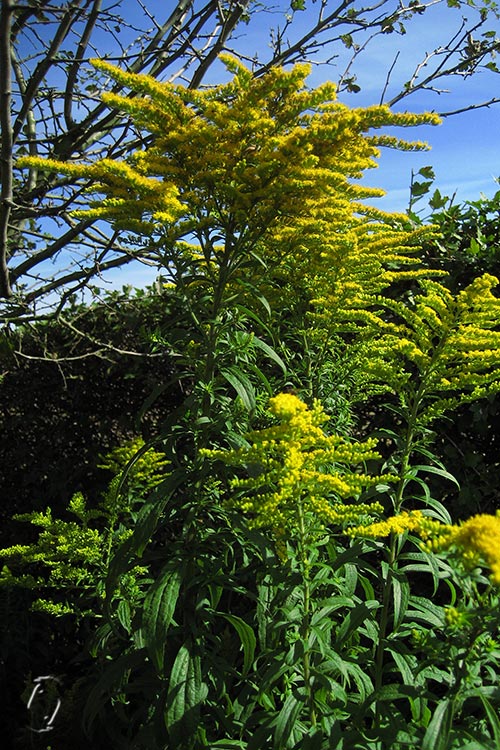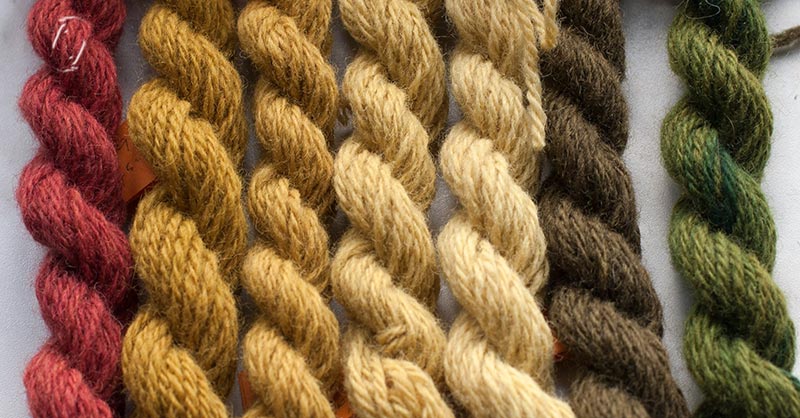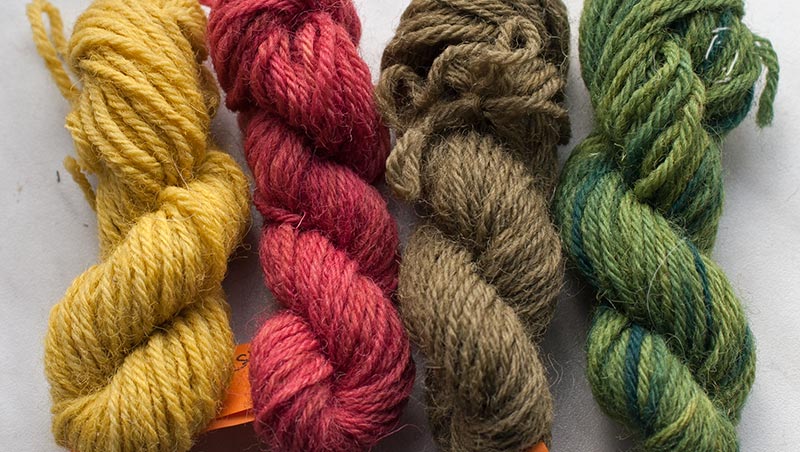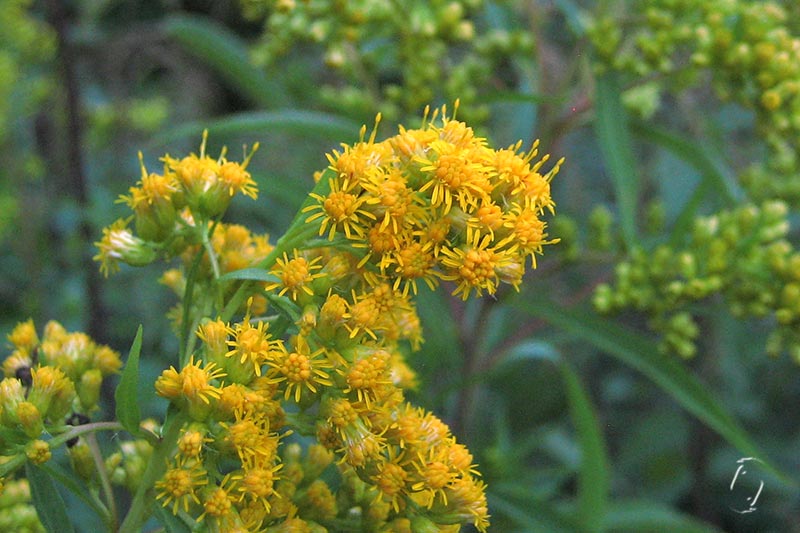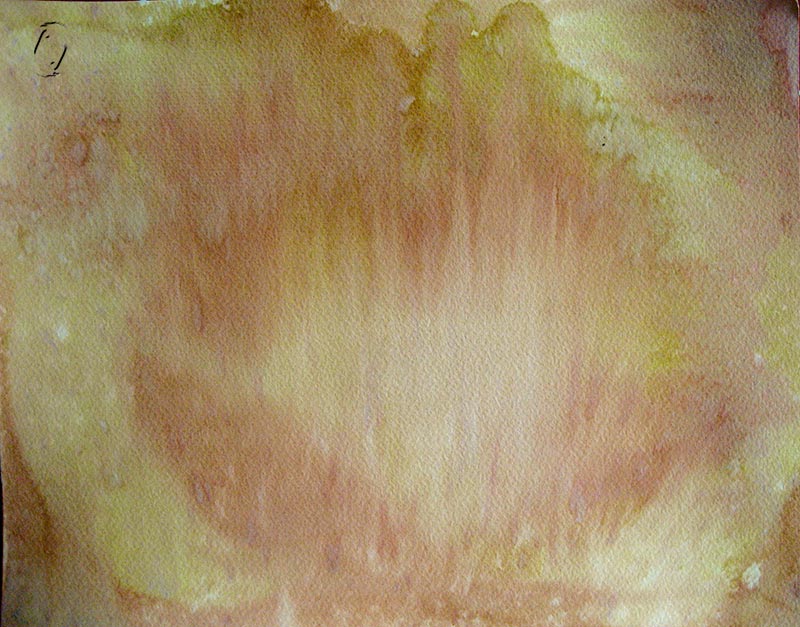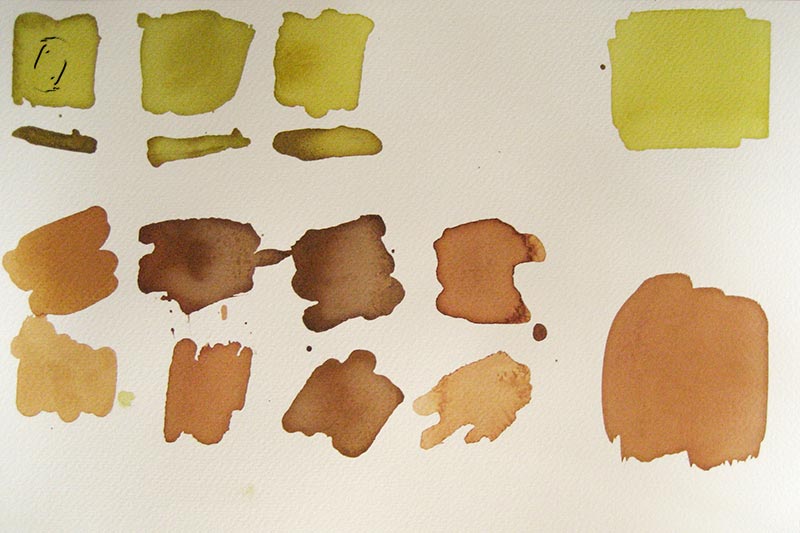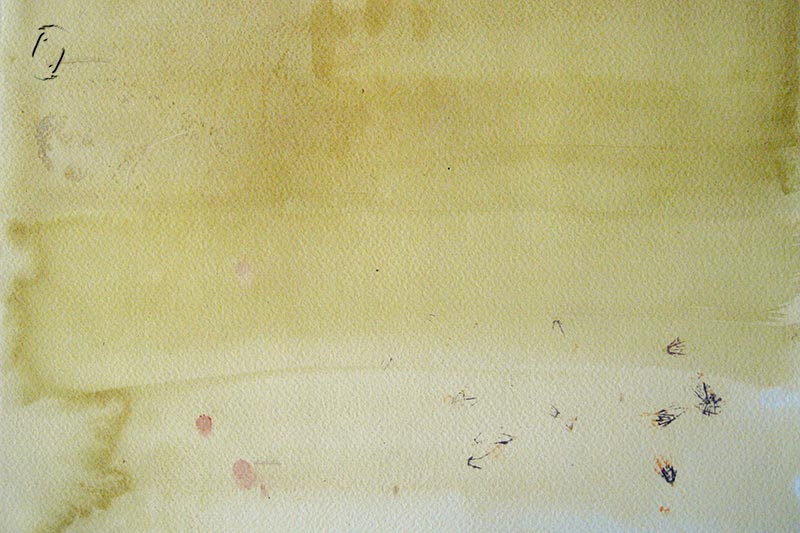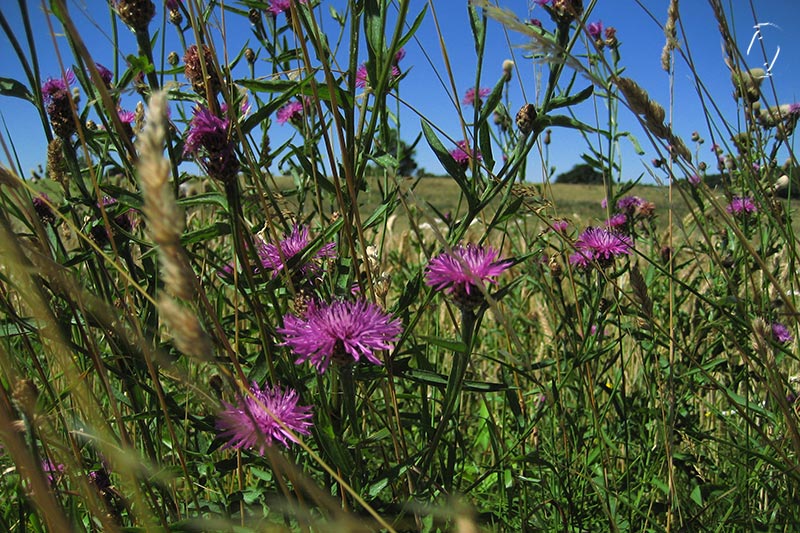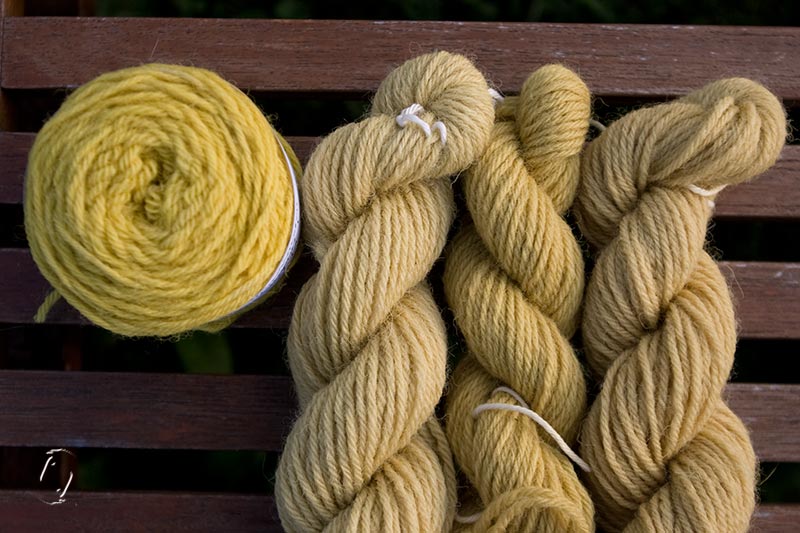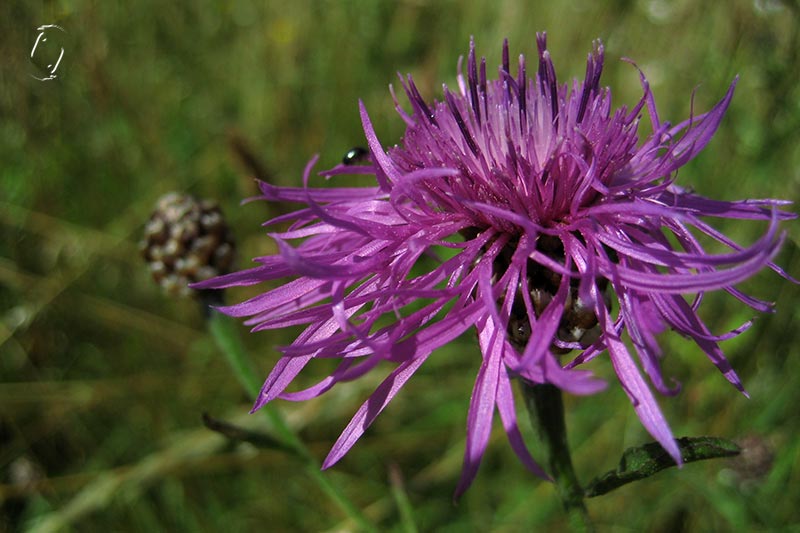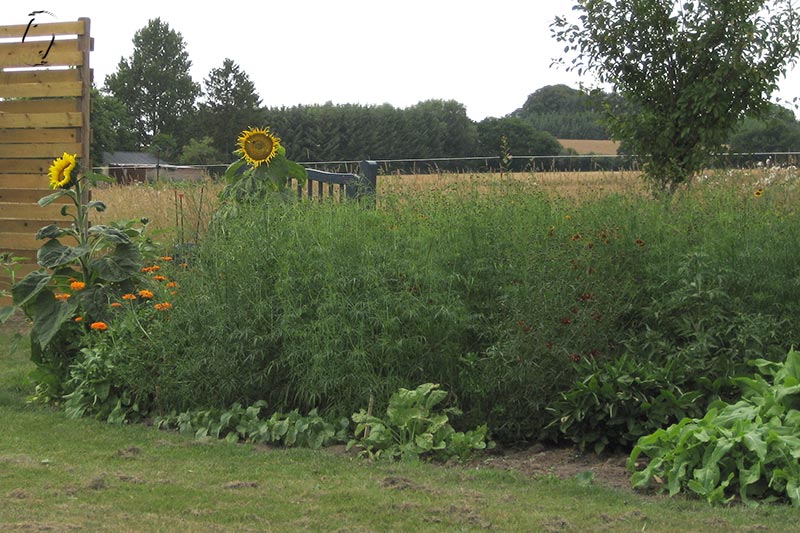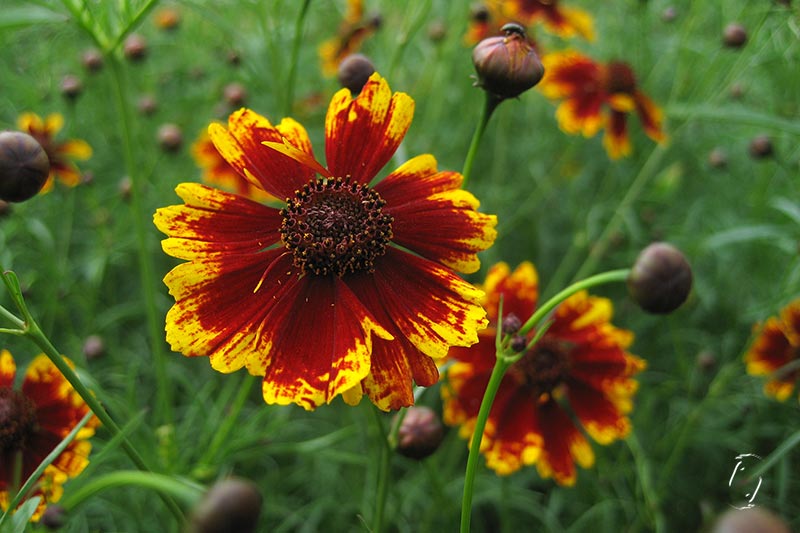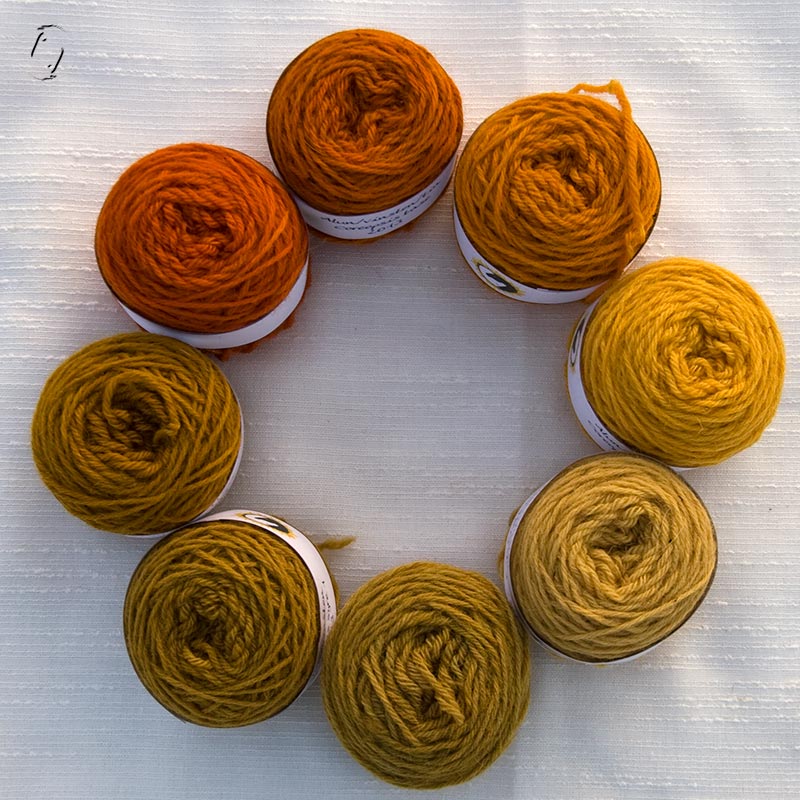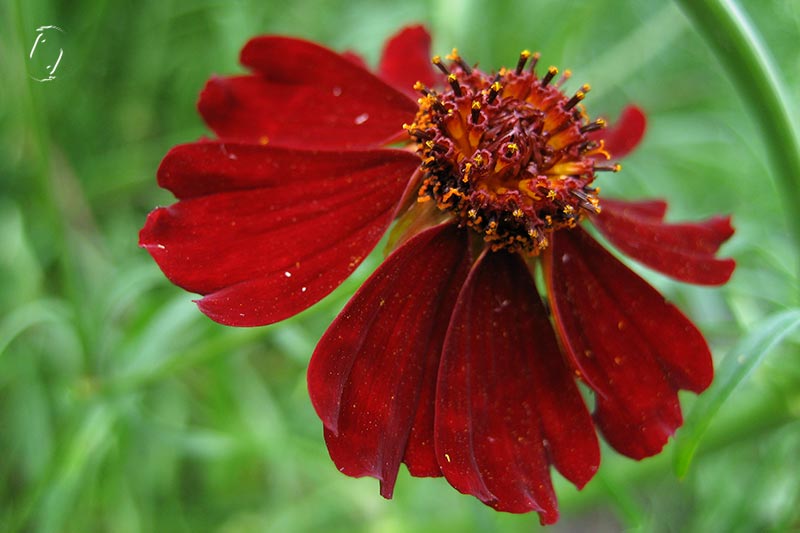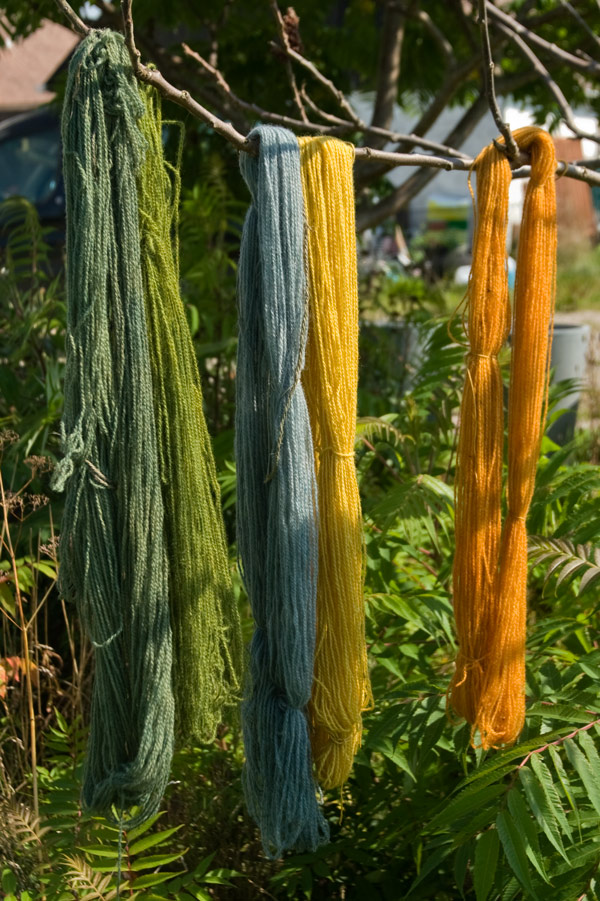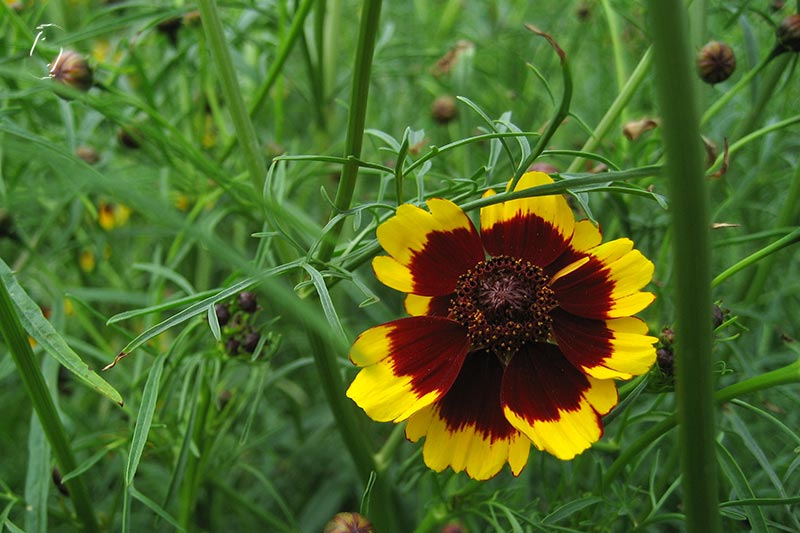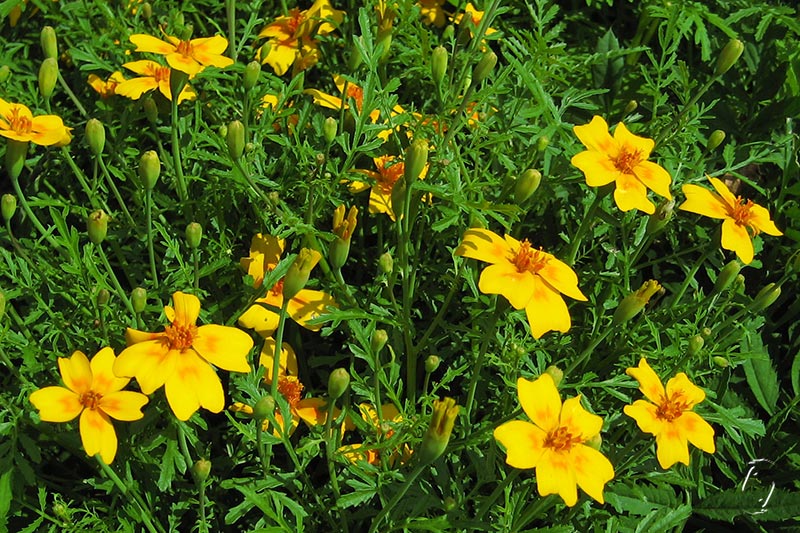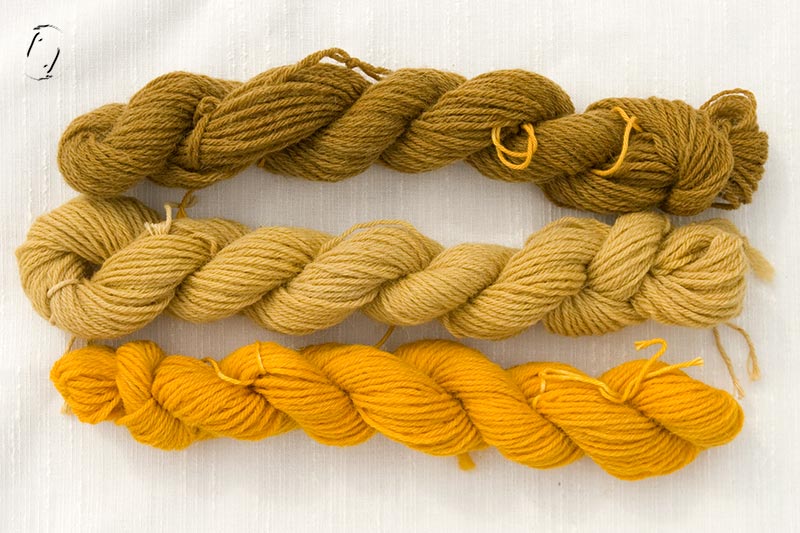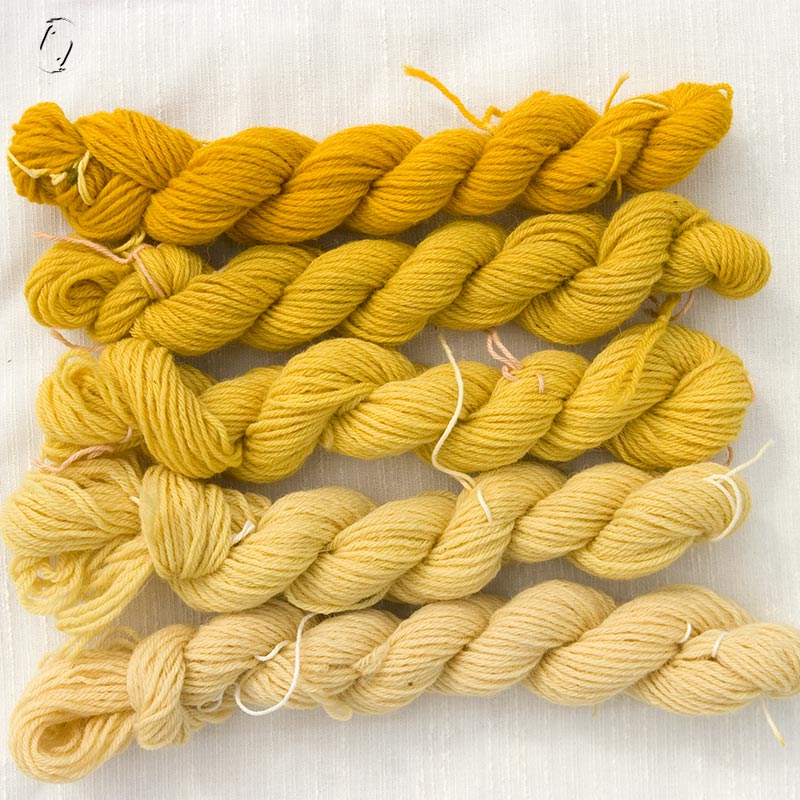Plant dyeing season is coming to an end, at least the urgent part of it trying to use the fresh plants as they appear. I’m beginning to look at my paints and spinning wheel again, but I still have a few experiments to share.
I’m down to making 6 g hanks at the moment, but that also means I can add one more experiment to the log that I had thought to save for next year. It also means I can do more experiments with one single plant. It does not mean I’ll remember to include every single variety there is to try, but I’ll try.
I’ve seen 2 varieties of Goldenrod in the forest that bloomed one after the other, they’re brown now, but the ones in my garden are flowering, so I used those.
Flowers & leaves separately. Alum, alkaline after, iron after, exhaust bath, blue overdye, cochineal overdye.
The colour from the flowers turned out to be a lot more bronzy and dark than I’d anticipated, and I wondered if it was because I accidentally boiled the plants very strongly, then left to steep for quite a long time, THEN managed to also boil the yarn. The day after I scooted over to Riihivilla where I’d saved but not yet read her post on goldenrod, and this is what I was told:
The color may dull if the temp is too hot or the yarns cool in the bath, just like it does with weld.
Well, there you go. 😉 It’s something I’ve noticed happening with some yellow plants, if you leave it in too long, it goes brown. Others, like birch, seem to be able to last for a long time so that you can safely solar dye and still get brilliant colour.
Leaves were more green and not as strong in colour.
Luckily I had more flowers in the garden (I’m saving the ones in the freezer, from the forest, for later). So I did a very careful simmer and did the whole thing on the same day, no steeping.
Nothing extraordinary from this yellow, in fact I like the boiled lot best.
Gyldenris
Sæsonen for friske planter til farvning er ved at være slut og jeg er begyndt at skæve til maling og spinderok igen. Men jeg har lige et par eksperimenter eller 4 jeg gerne vil dele før vi skifter kanal.
Jeg har besluttet at lave mindre bundter end jeg plejer, simpelthen for at kunne lave flere eksperimenter, der er så mange ting jeg finder på at ville prøve med surhed, vandtype, overfarvning og andet halløj. Men så blev der også lige mulighed for et lille ekstra gult indslag, som jeg ellers havde tænkt mig at gemme til næste år.
Jeg startede med at totalkoge blomsterne, derefter kom jeg også til at koge garnet, begge dele stod i øvrigt i badet i over et døgn. Farven blev en del mere gylden end forventet, og det kunne jeg så bagefter læse mig til på en anden blog, at for at få den kølige, klare gule skal det ikke varmes så hårdt og ikke stå for længe. Godt så! Jeg endte jo så med at også lave en portion som simrede ganske forsigtigt. Samt en portion kun med blade, det er de grønlige. Alle fik et dyp i jern, et bundt i cochenille bare for sjov, og et i indigo.

